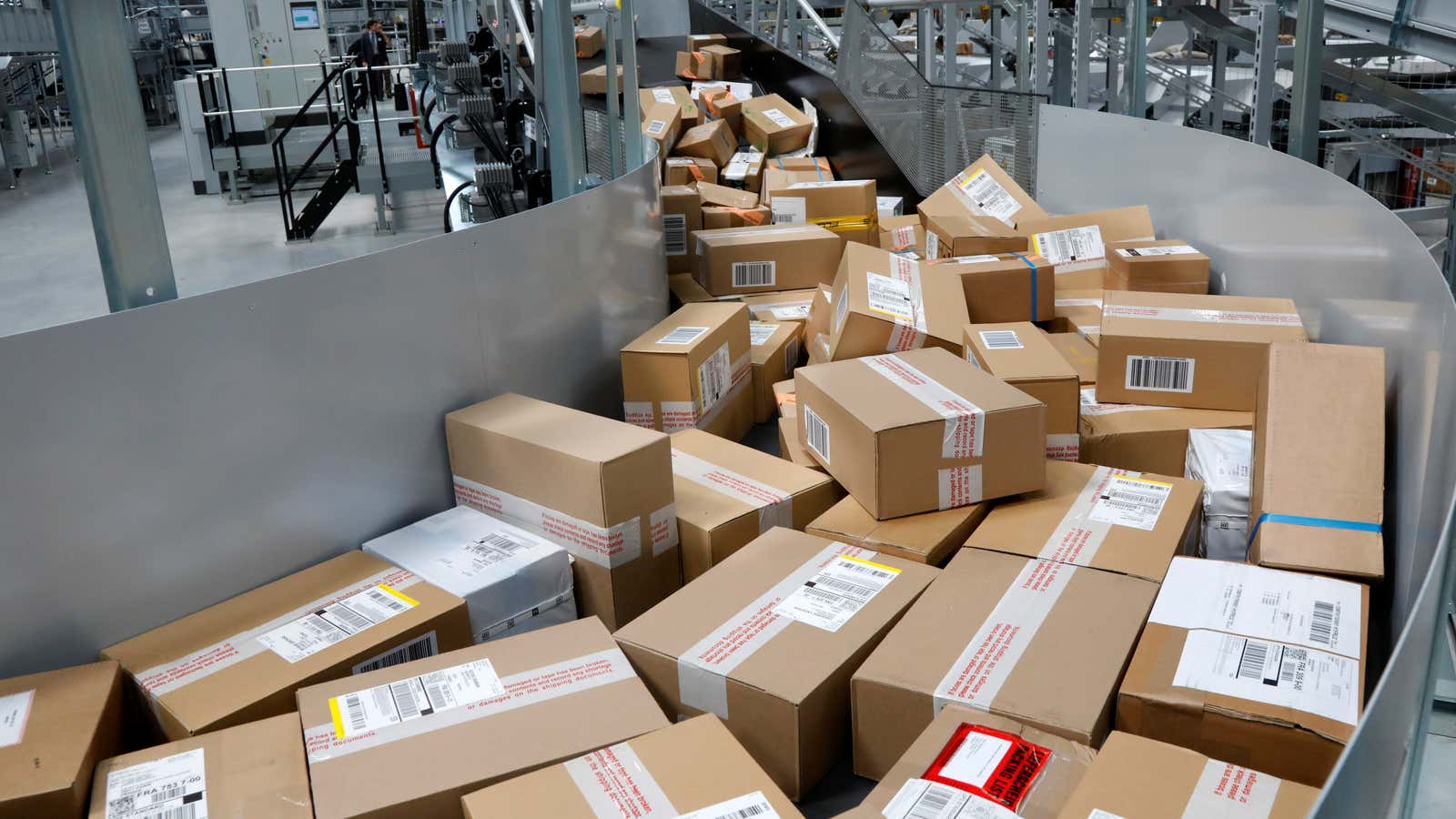With holiday shopping come the inevitable returns of gifts and other purchases. Last year, UPS predicted it would handle nearly 2 million returns after the holiday season, marking a seventh-consecutive record for the company that it attributed to the rise in e-commerce. Online sales tend to have higher return rates than in-store purchases, climbing as high as 30% during the holidays by one estimate.
This year, with e-commerce surging due to the pandemic, returns could reach new heights. The result for retailers could be a significant rise in related costs.
CBRE, a US commercial real estate firm, forecasts holiday purchases made online will soar to $234.9 billion in the US this year. In a worst-case scenario, goods worth as much as $70.5 billion could be returned, it says, a 73% increase over the firm’s estimated average for the previous five years.
Each of those returns carries costs such as customer care, shipping fees, inspecting and sorting goods, sometimes repackaging and repairing them, and storage. A significant share will never make it back to store inventory, incurring more expenses as they’re liquidated at a discount or discarded.
It’s unclear exactly how much returns cost retailers each year. “Indeed, analysis of the retail landscape suggests a lack of uniform agreement as to the financial and strategic consequences of returns,” noted a report (pdf) this April by researchers at the University of Pennsylvania and Emory University. “Retail advisory firm Optoro reports that of 117 top retailers, only 32% quantify the full cost of returns.”
Different categories of goods can also have different return rates (pdf) and corresponding costs. Products such as electronics, for instance, “may see higher reverse logistics costs due to the need to inspect, test, wipe customer data, reimage and sometimes repair for warranty purposes,” CBRE notes.
But while estimates of the costs vary, they generally run high. Optoro, which provides software for the reverse logistics of returns and worked with CBRE on its report, says return costs on a $50 item can be nearly $30. An analyst at RSR Research, a market intelligence firm focused on technology in retail, told Vogue Business last year that retailers lose a third of their revenue to returns.
The figures suggest returns could collectively cost US retailers billions this year if CBRE’s forecast pans out. Of course, making accurate forecasts this year has been difficult, if not impossible, given how disruptive Covid-19 has been. Some companies in fashion—a category that usually experiences above-average return rates—have reported lower return rates than usual as the pandemic has made shoppers more careful about their purchases and changed what they’re buying.
Either way, companies should probably be prepared to handle high volumes of online returns this year, and parcel services like UPS should too.
